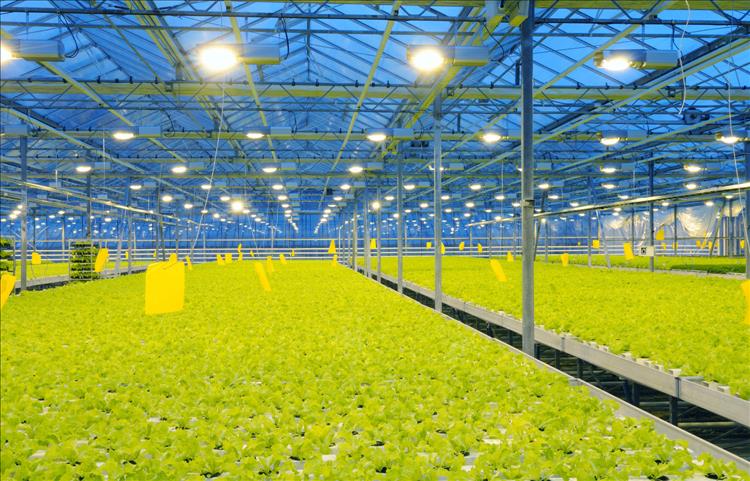
Horticulture LED Lighting Market Growth Driven By Increasing Adoption In Greenhouses And Vertical Farms Market Trends & Business Updates
- Share Tweet Pin LinkedIn Email
The global Horticulture LED Lighting Market is at the forefront of transforming modern agriculture, enabling efficient and sustainable farming practices. With innovations continuing to emerge, the market holds immense potential to address global food security challenges and environmental concerns, shaping the future of agriculture.
The global horticulture LED lighting market is witnessing significant growth, driven by increasing adoption of energy-efficient lighting solutions in the agricultural sector. Horticulture LED lighting provides optimized light wavelengths to enhance plant growth and productivity, offering solutions for diverse applications such as commercial greenhouses, indoor and vertical farming, and research and development (R&D) .
Market Drivers
Rising Food Demand and Limited Arable LandThe growing global population is escalating the demand for food. Limited availability of arable land has spurred the adoption of controlled-environment agriculture (CEA), boosting the use of LED lighting for optimized plant growth. Energy Efficiency and Sustainability
LED lighting consumes less power, has a longer lifespan, and generates less heat compared to traditional lighting systems, aligning with sustainability goals and reducing operational costs. Technological Advancements
Innovations such as tunable spectrum, smart controls, and IoT integration are improving the efficiency and usability of horticulture LED systems. Government Initiatives and Incentives
Subsidies and policies encouraging the adoption of energy-efficient technologies further drive market growth.
Get more information on“Global Horticulture LED Lighting Market Research Report” by requesting FREE Sample Copy at
Market Segmentation
By Product
High Power (Greater Than 300W)High-power LEDs are predominantly used in large-scale commercial greenhouses requiring intense light to stimulate plant growth. These products cater to crops with higher light demands, such as tomatoes and peppers. Low Power (Less Than 300W)
Low-power LEDs are preferred for smaller operations like indoor and vertical farming , focusing on leafy greens, herbs, and microgreens. These systems are cost-effective and suitable for compact setups.
By Application
Commercial GreenhouseWith the expansion of commercial farming, LED lighting systems are replacing traditional light sources like HPS (High-Pressure Sodium) lamps. Benefits include better crop yield, energy savings, and lower heat output. Indoor and Vertical Farming
Indoor and vertical farming are gaining popularity in urban areas, leveraging horticulture LED lighting for year-round crop production in confined spaces. R&D
Research institutions and agricultural labs employ advanced LED systems to study plant responses to varying light spectra, driving innovations in crop cultivation.
By Region
North AmericaThe U.S. leads due to the proliferation of vertical farming and government initiatives supporting sustainable agriculture. Canada is also investing in horticulture technologies to ensure food security. Europe
Europe dominates with its early adoption of LED technology and strong emphasis on energy-efficient practices. Countries like the Netherlands and Germany are frontrunners in greenhouse farming. Asia-Pacific
APAC is the fastest-growing region, driven by rising food demand, urbanization, and advancements in vertical farming, particularly in China, Japan, and India. Rest of the World
The Middle East and Africa are gradually adopting LED solutions for agriculture to address water scarcity and enhance food production in arid regions.
Market Trends
Shift Towards Smart FarmingIntegration of AI and IoT in LED lighting systems is enabling precision agriculture, with real-time monitoring and adaptive lighting control. Customization of Light Spectra
Tailored light wavelengths to optimize photosynthesis and plant growth are becoming a standard feature. Rise of Urban Agriculture
Indoor and vertical farming in metropolitan areas is a notable trend, reducing transportation costs and improving food security.
Browse Global Horticulture LED Lighting Market Research Report with detailed TOC at
Competitive Landscape
Leading players in the market include:
-
Signify N.V.
Known for its cutting-edge horticulture lighting solutions under the Philips brand. Heliospectra AB
Specializes in smart LED systems with adaptive light spectra. Valoya Oy
Offers research-grade LEDs for plant growth and development. Osram GmbH
Provides robust solutions for both large-scale and compact agricultural setups. LumiGrow Inc.
Focuses on advanced LED lighting systems for controlled-environment agriculture.
Market Forecast (2023-2032)
The horticulture LED lighting market is poised to grow at a CAGR of 18.89% during the forecast period, driven by increased demand for sustainable farming solutions and technological advancements. By 2032, the market is projected to reach a valuation of USD 8-10 billion . North America and Europe are expected to maintain their dominance, while APAC will emerge as the fastest-growing region.

Legal Disclaimer:
MENAFN provides the
information “as is” without warranty of any kind. We do not accept
any responsibility or liability for the accuracy, content, images,
videos, licenses, completeness, legality, or reliability of the information
contained in this article. If you have any complaints or copyright
issues related to this article, kindly contact the provider above.


















Comments
No comment